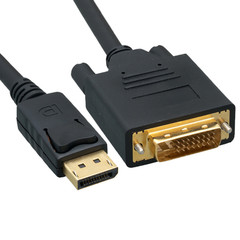The way I'm interpreting this is... you just provided an example of the type of board that I need, but not the exact one that will work for the displays that I mentioned?
Yes, I do not have time to research. If you use one of this type of boards, they only work with certain sizes of displays. Some allow you to go in and make changes. One I looked at had 16 formats, only.
Years ago I designed several of these boards.
The LCDs you are looking at:
Data is "TTL" levels. So about 0 and 3 volts.
Colors are made up of many wires.
Example1: R0, R1, R2, R3, R4, R5, & G0, G1, G2, G3, G4, G5, & B0, B1, B2, B3, B4, B5, & Horizontal, Vertical, Clock
Example 2: R0-R7, G0-B7, B0-B7, H, V, C
So RED can be 4 or 5 or 6 or 7 or 8 wires.
The timing is important. Clock frequency=35mhz +/- 10%, H=31khz +/- 15%, V=60hz +/- 15%. Then there is issues of "blanking" time.
All these must be right.
I don't Windows is going to work with a resolution below 640x480. On this computer/video card I only have 11 formats.
Analog video (VGA):
There are three wires for video. (about 0 to 1 volt.) Where are 256 levels from 0 to 1 volts.
And then there is H and V.
Digital video:
The wires come in pairs. Data and not-Data (D, /D)
The voltage is about 1/2 volts.
Each data is Do, /D0, D1, /D1, D2, /D2, Clock, /Clock
Data is serial and very fast.
In one pixel time R0-R7, G0-G7, B0-B7, H, V, Blank are all sent over the three data wires.
---------------------------------------------------------
So what to do????
Think about this:
Here is a $35.00 computer. It can drive many different types of displays. There is a display port that drives many types of raw LCDs.
I think you will have some pin out problems. It should drive any of the "TTL" displays like you want.
I have one of these. I am using a digital TV or a PC-monitor. You can get these in a kit where the computer board is on the back of a LCD display. The computer talks LAN wired/wireless and USB so you can network them together. It can talk Windows 10 (light). I an using Unix.
**broken link removed**
So one PC could send commands to a huge bank of these boards.
This board has a 64 bit quad 1.2ghz computer. It does video very fast. Real time video. People do video games. I am using a single core 1ghz one as a PC. I run office and internet on this computer.
Ask question!
----edited------
I wish you were next door. I have not had much work this month. We could go to the lab and make things work.


